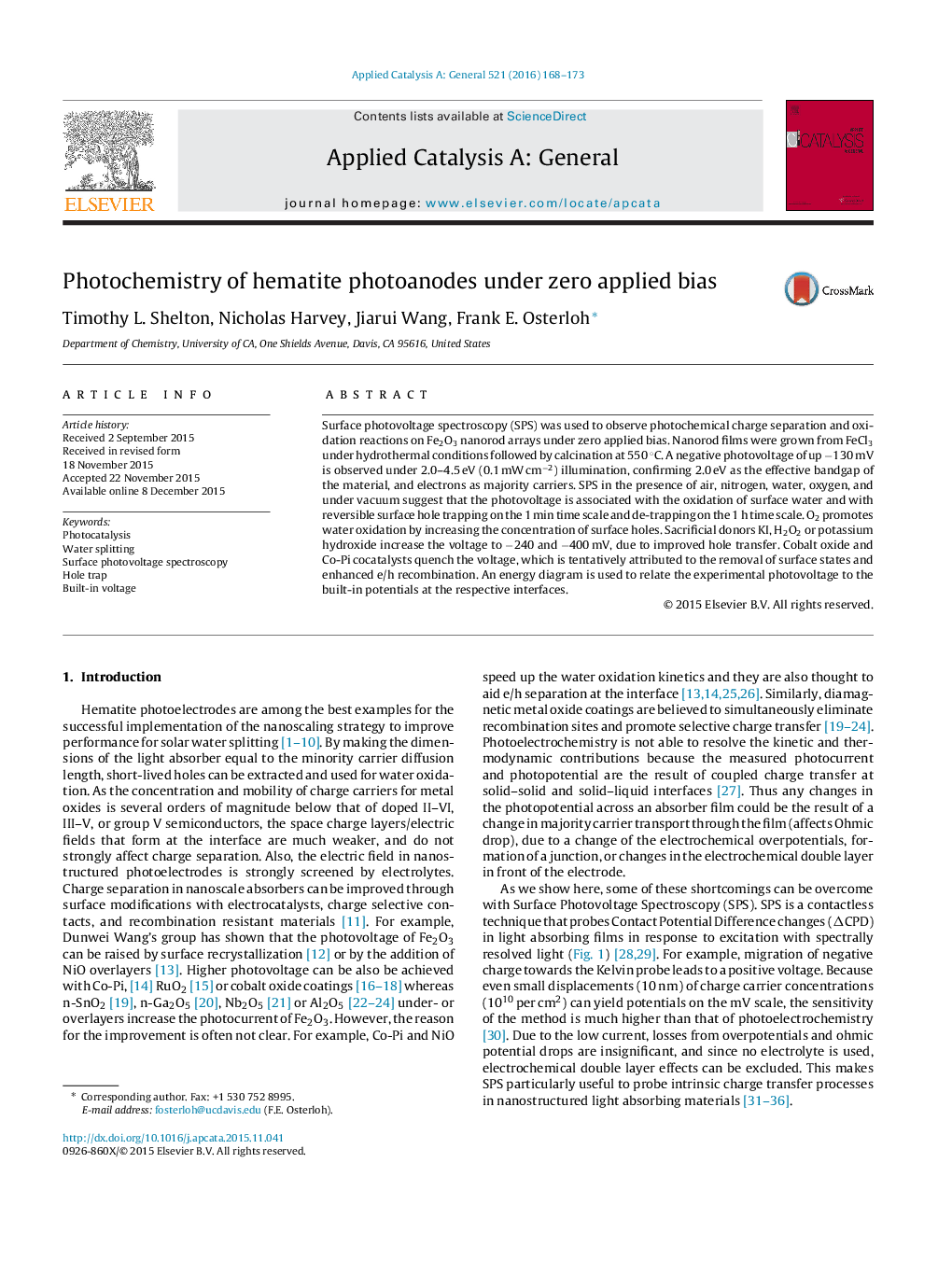| Article ID | Journal | Published Year | Pages | File Type |
|---|---|---|---|---|
| 38807 | Applied Catalysis A: General | 2016 | 6 Pages |
•Surface photovoltage spectroscopy (SPS) observes photochemical oxidation reactions on Fe2O3 nanorod films without applied bias.•Photovoltages of up to −130 mV are generated when photoholes are trapped in surface states and react with water.•Reactions with sacrificial electron donors increase the voltage up to −400 mV.•Oxygen increases the photovoltage, suggesting it can promote water oxidation by increasing the concentration of surface holes.
Surface photovoltage spectroscopy (SPS) was used to observe photochemical charge separation and oxidation reactions on Fe2O3 nanorod arrays under zero applied bias. Nanorod films were grown from FeCl3 under hydrothermal conditions followed by calcination at 550 °C. A negative photovoltage of up −130 mV is observed under 2.0–4.5 eV (0.1 mW cm−2) illumination, confirming 2.0 eV as the effective bandgap of the material, and electrons as majority carriers. SPS in the presence of air, nitrogen, water, oxygen, and under vacuum suggest that the photovoltage is associated with the oxidation of surface water and with reversible surface hole trapping on the 1 min time scale and de-trapping on the 1 h time scale. O2 promotes water oxidation by increasing the concentration of surface holes. Sacrificial donors KI, H2O2 or potassium hydroxide increase the voltage to −240 and −400 mV, due to improved hole transfer. Cobalt oxide and Co-Pi cocatalysts quench the voltage, which is tentatively attributed to the removal of surface states and enhanced e/h recombination. An energy diagram is used to relate the experimental photovoltage to the built-in potentials at the respective interfaces.
Graphical abstractFigure optionsDownload full-size imageDownload high-quality image (146 K)Download as PowerPoint slide
